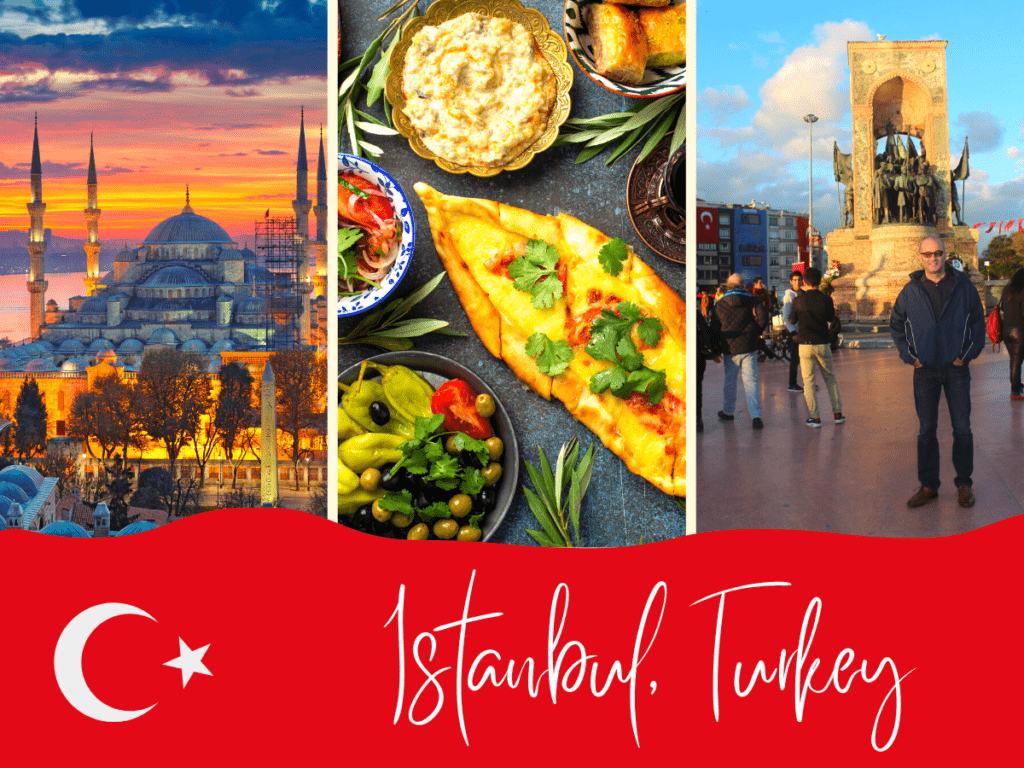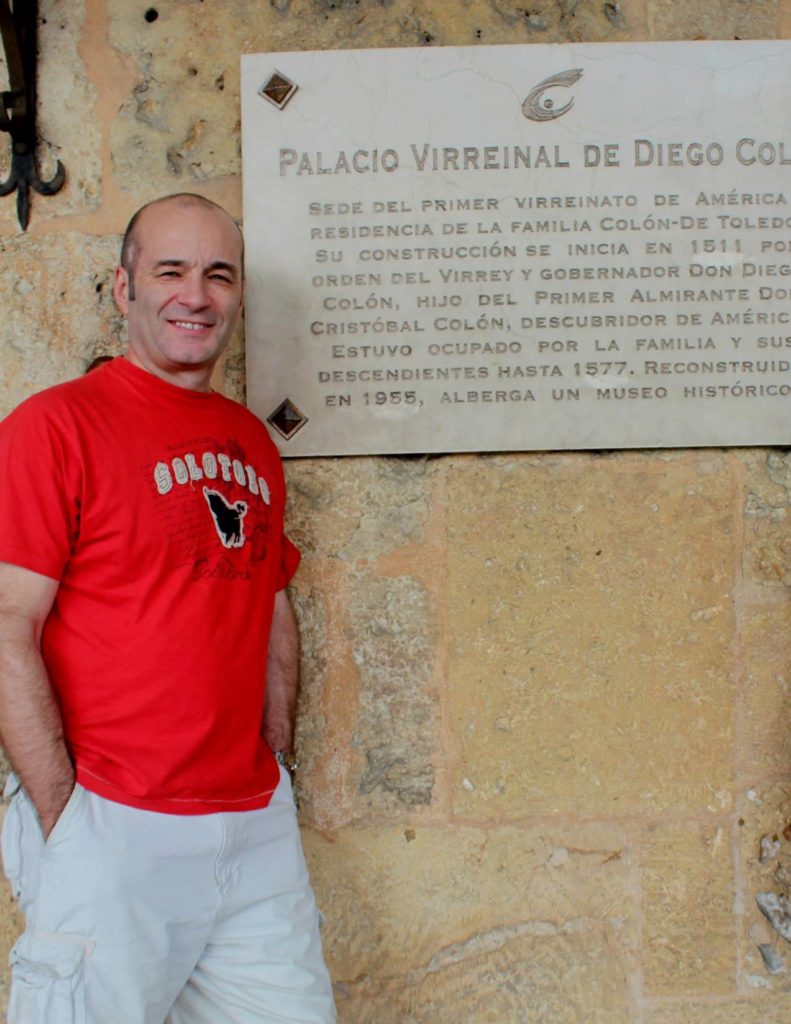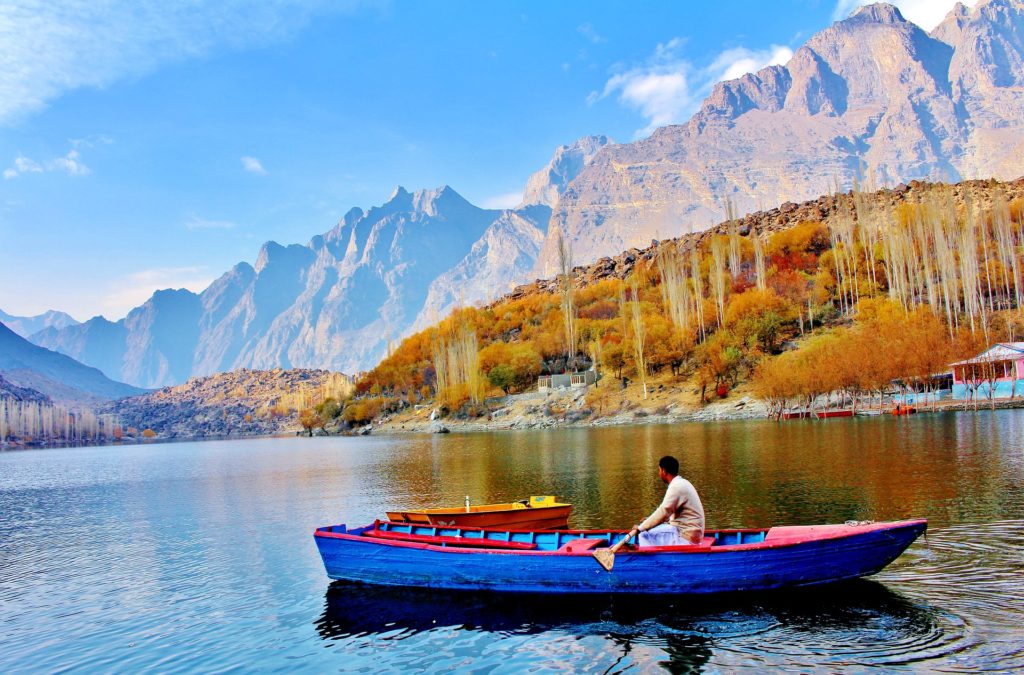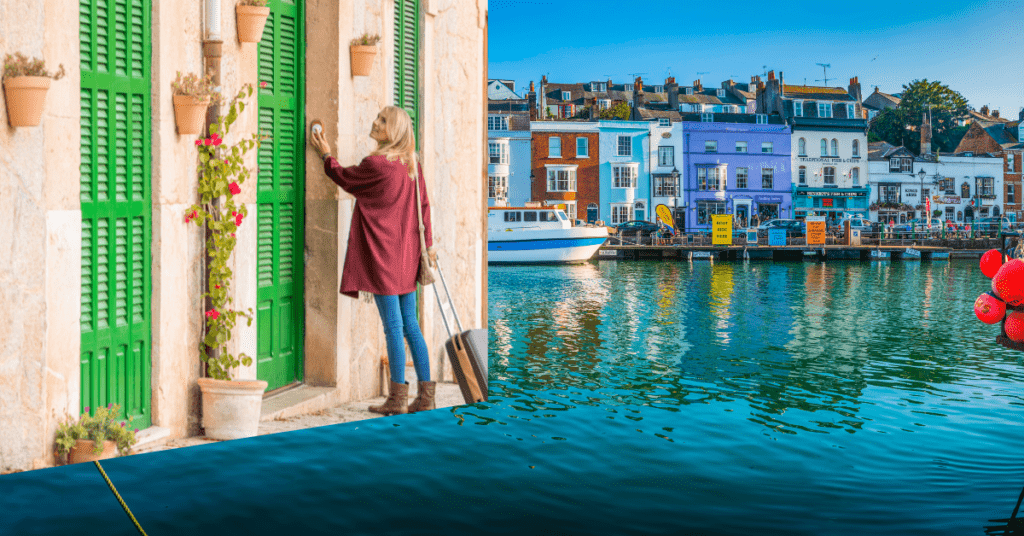Istanbul had been high on my bucket list since I first saw From Russia with Love, which to this day remains my favourite James Bond movie. I have had the huge fortune to visit the dynamic, trans-continental metropolis several times in recent years and it never fails to delight and enthrall in equal measures.
There is so much to see and do in Istanbul, planning a short trip can seem overwhelming. So, I have put together a suggested itinerary for an action-packed two-days in Istanbul. At the end of it, you will have a flavour of most of the major attractions and will likely have come to love the city as much as I do. I know that I would have loved to have had this for my first short trip to the city.
While Istanbul is a modern, cosmopolitan city in a secular country, it’s important to remember that many of the top attractions are Islamic and so it makes sense to dress in a reasonably conservative way, which in essence means covered shoulders and legs.
Table of Contents
1. Topkapi Palace
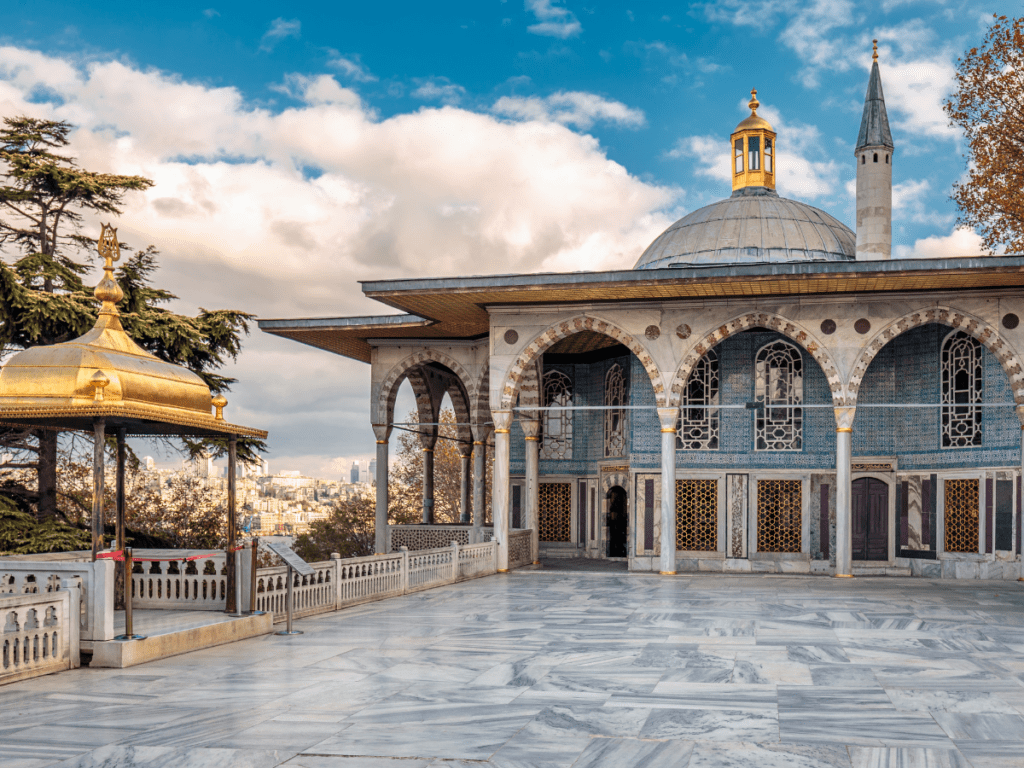
To enjoy all that the Topkapi Palace has to offer, you need to get there first thing in the morning. That’s why I’m suggesting that this is where you start. Lines to enter can be extremely long, so buy your tickets online before you arrive.
Tickets for the Harem and the Hagia Irene church must be purchased separately and are not available online. If you wish to visit the Harem, and I suggest that you should, you need to get your tickets early as the number of visitors each day is limited. So as soon as you get to the Palace, head straight for the Harem ticket window, and secure your precious tickets before they sell out for the day.
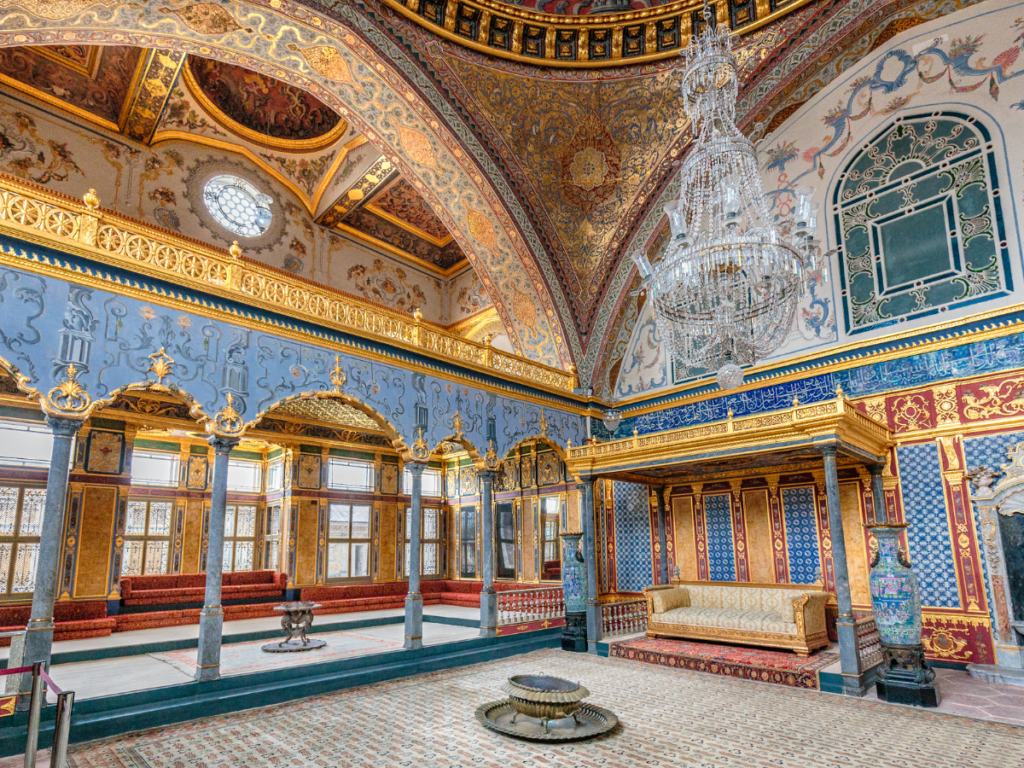
Topkapi Palace is situated on Seraglio Point and affords spectacular views across the Marmara Sea, the Golden Horn and the Bosphorus. I particularly enjoyed strolling the grounds at lunch time, as there were many locals enjoying shady spaces to eat and socialize.
The Palace was completed in 1478 and was the primary imperial residence of the Ottoman sultans until 1853 when the Sultan abandoned it in favour of Dolmahbahçe Palace. It is now a museum that provides fabulous insights into the world of the Ottoman Imperial Family while you wander through a succession of courtyards. You will need to allocate at least three hours for your visit.
2. Enjoy Balik Ekmet for Lunch
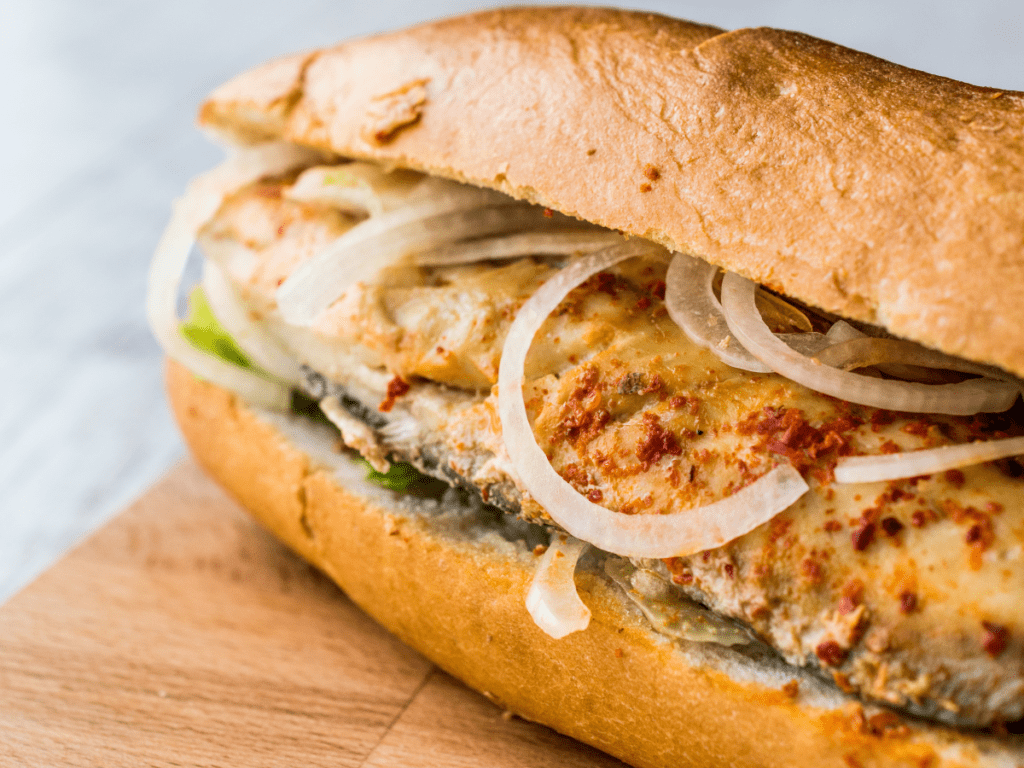
You will be hungry by the time you leave the Topaki Palace, so head to the southern banks of the Golden Horn near to the Galata Bridge for lunch. There you will find stalls and boats selling Balık ekmek, a fish sandwich and common street food in Istanbul. It is a made from a mackerel fillet that is grilled or fried with salad leaves on Turkish bread.
Try to avoid the fancy boats, which are designed to attract tourists, and look for the simpler places that are mostly patronized by locals. The quality can vary significantly so your choice of establishment is important.
3. Hagia Sophia
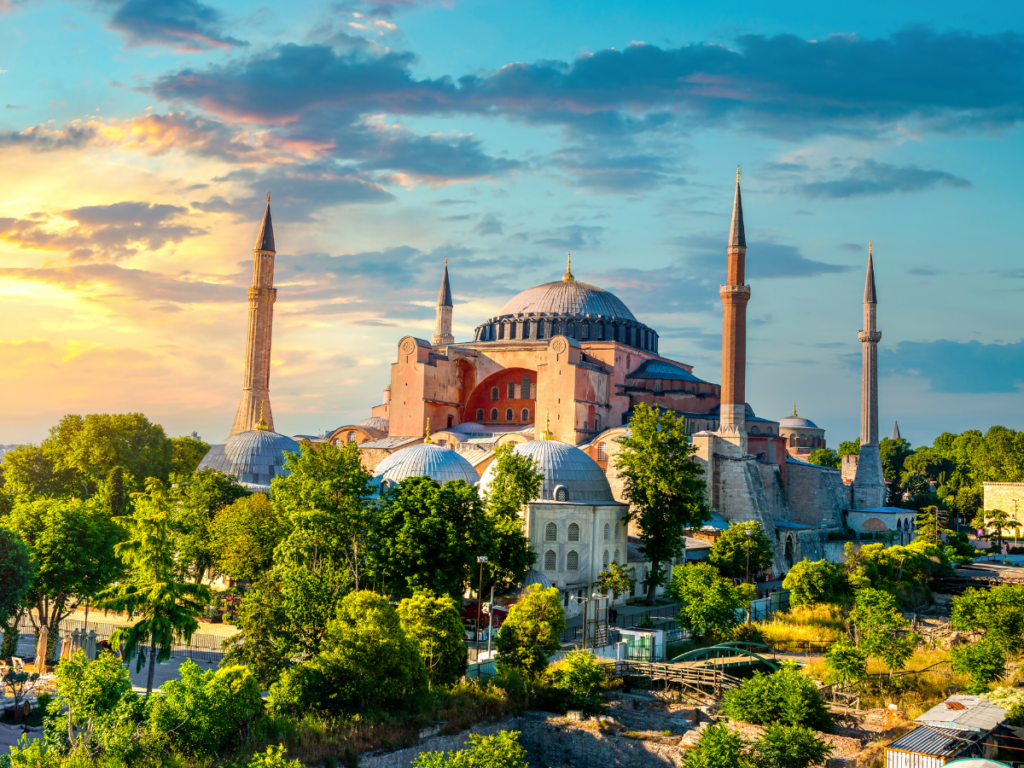
If there is one “must see” in Istanbul it’s Hagia Sophia. It’s the most visited tourist attraction in the country. Originally constructed as a Christian Cathedral in the 6th Century, it was converted into a Mosque 900 years later before becoming a museum in 1935.
It will be interesting to see the long-term impact of the 2020 decision by the Turkish Council of State to reclassify the building as a mosque. Currently, non-Muslims can visit outside regular prayer times and there is no admission fee.
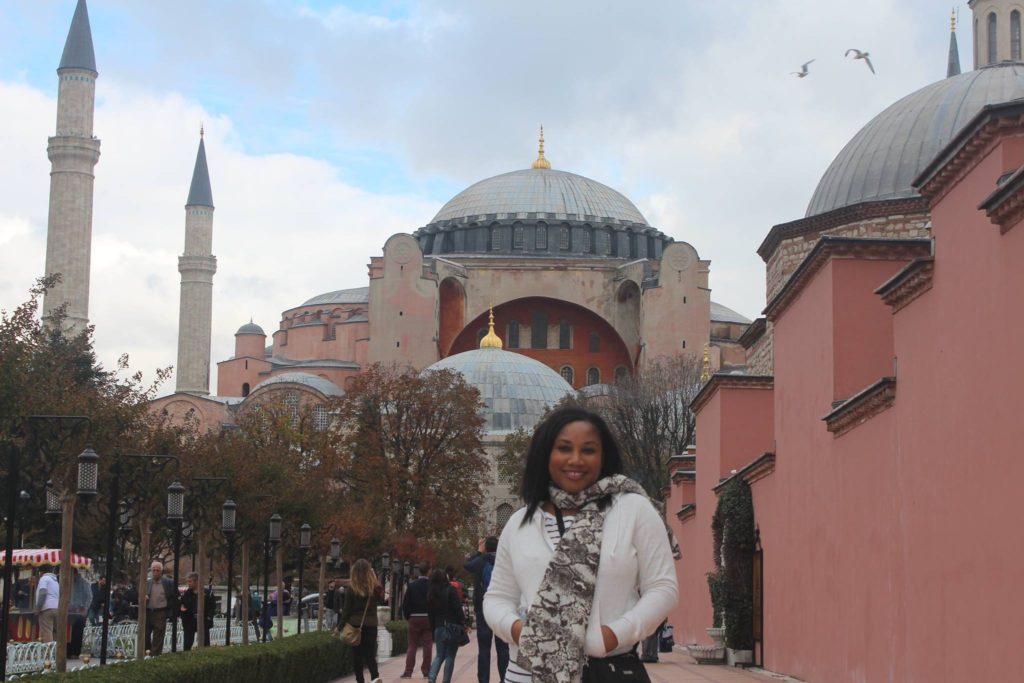
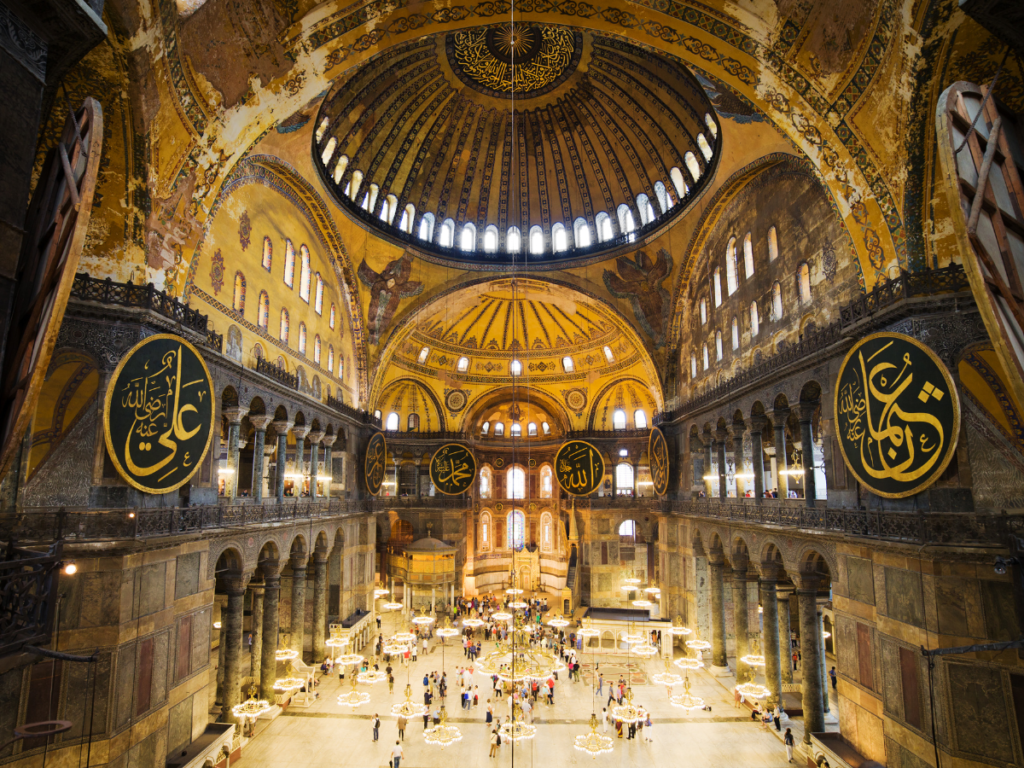
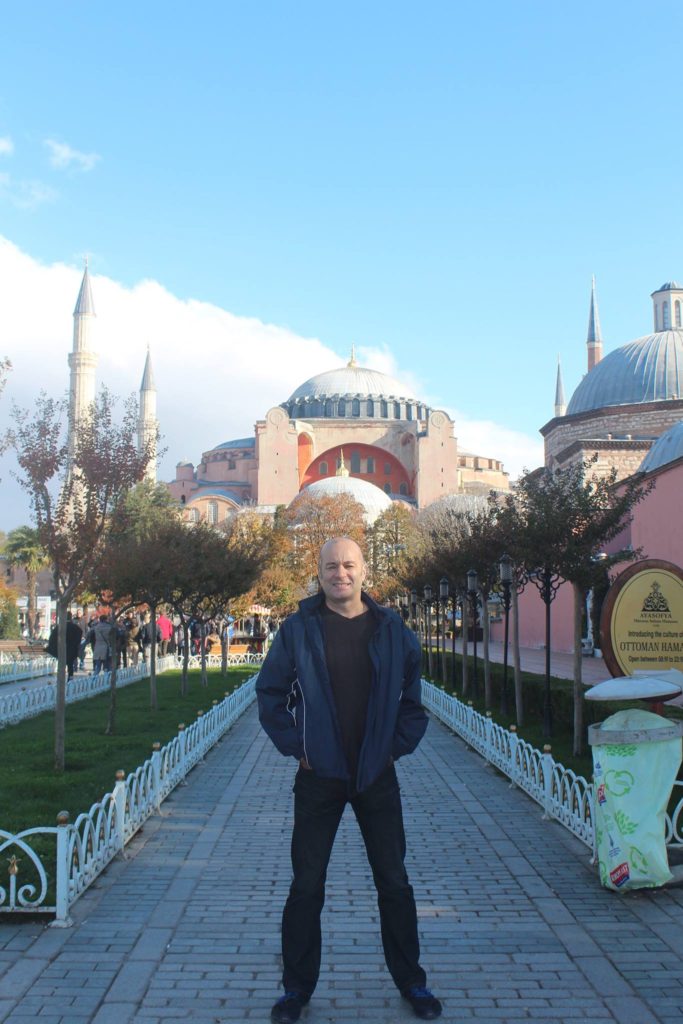
The main attraction is the massive prayer hall with its stunning dome. On a bright, sunny day stand under the dome and look upwards. The light reflects in a way that makes it appear as if the dome is hovering above.
You should also climb the stairs to view the main hall from above and get a closer look at some of the many murals. These include, unusually for a mosque, Christian mosaics depicting Christ and the Virgin Mary. During prayer times, the Christian symbols are covered by curtains. The Turkish authorities have stated resolutely that they will not be removed or permanently covered.
It’s a working mosque, which means no shorts or bare shoulders. Women will also need to wear a headscarf, which can be borrowed free of charge at the entrance.
4. Blue Mosque
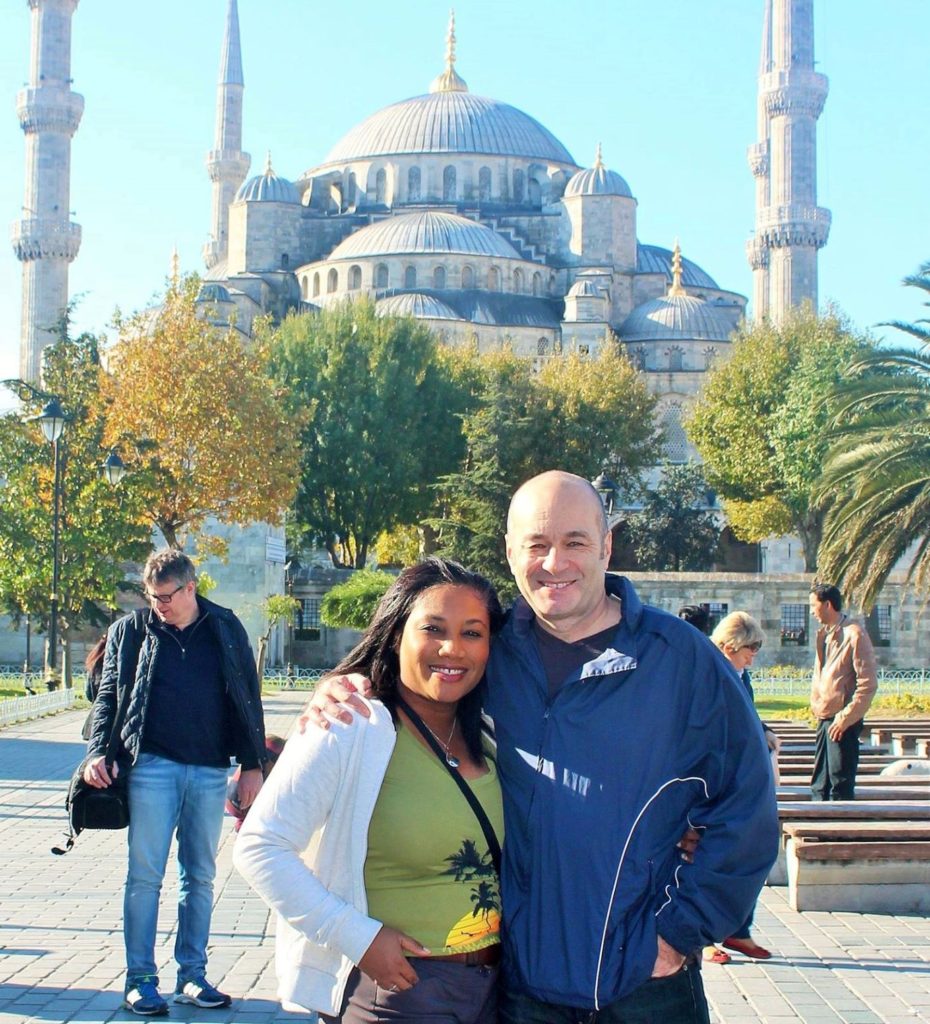
Located a few steps across Sultan Ahmet Park from the Hagia Sophia is the Blue Mosque or, to give its correct name, the Sultan Ahmed Mosque. It’s a 17th Century building that was commissioned by Sultan Ahmed I. The name Blue Mosque comes from the blue iznik tiles, which form a significant part of design on the interior of the domes.
The best way to enter the Mosque is through the northwest gate by the Hippodrome into the inner courtyard. This is a large open space with a stone water fountain in the centre, which is typical of Islamic design.
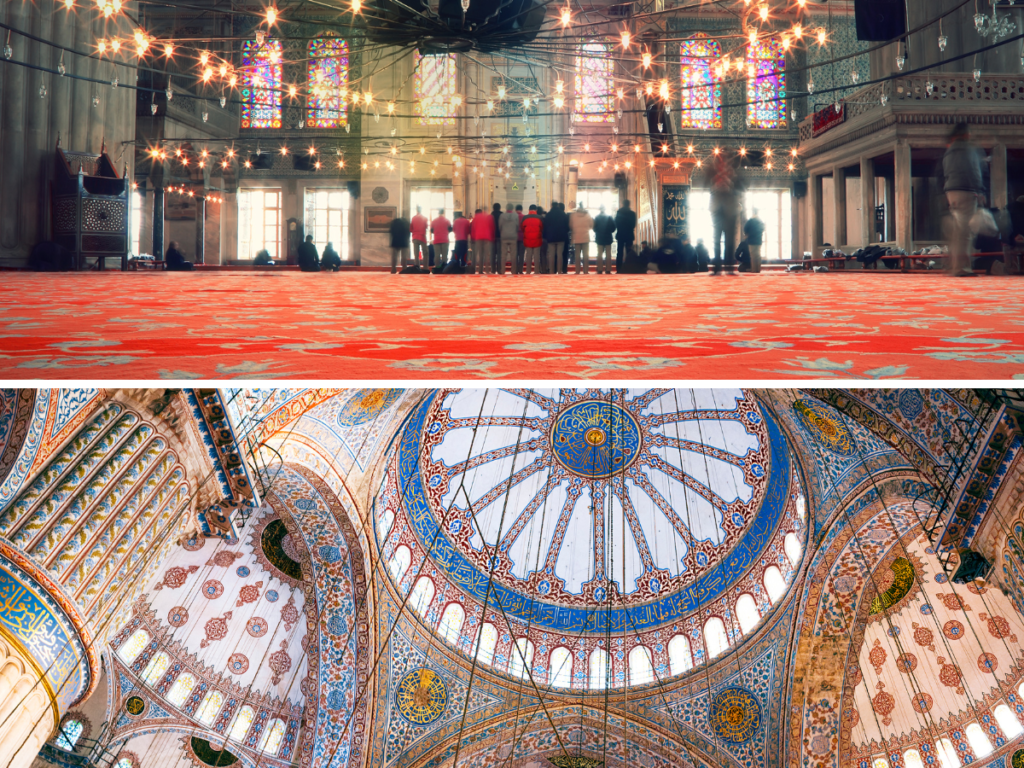
The interior is dominated by the main prayer hall and its blue tiled domes. Non-Muslims are restricted to a pass-through the zone at the rear of the building, but you still get great views of the interior and the stunning Islamic décor.
As with the Hagia Sophia, there is no charge to enter the Blue Mosque and headscarves are available for women to borrow free of charge.
5. Basilica Cistern
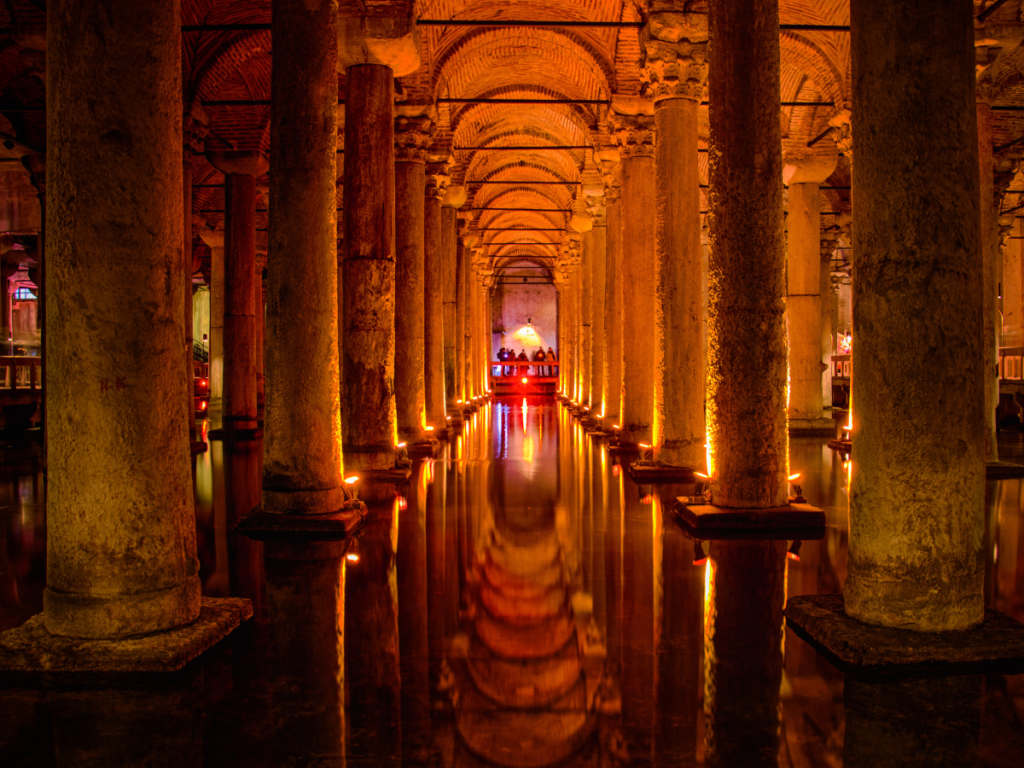
After five years of being closed for renovations, the Basilica Cistern has recently reopened for visitors. The entrance is in the historic Sultan Ahmet area between the Hagia Sophia and Blue Mosque. It is one of several underground reservoirs built in the Byzantine era to supply water to the city of Constantine.
You walk down 52 steps to be greeted by a breath-taking sight. 336 marble towers rising out of the water, each 9 metres high and each unique. The fantastic acoustics and spectacular surroundings are often used to host concerts. If you have a chance to attend one of these, grab the opportunity with both hands.
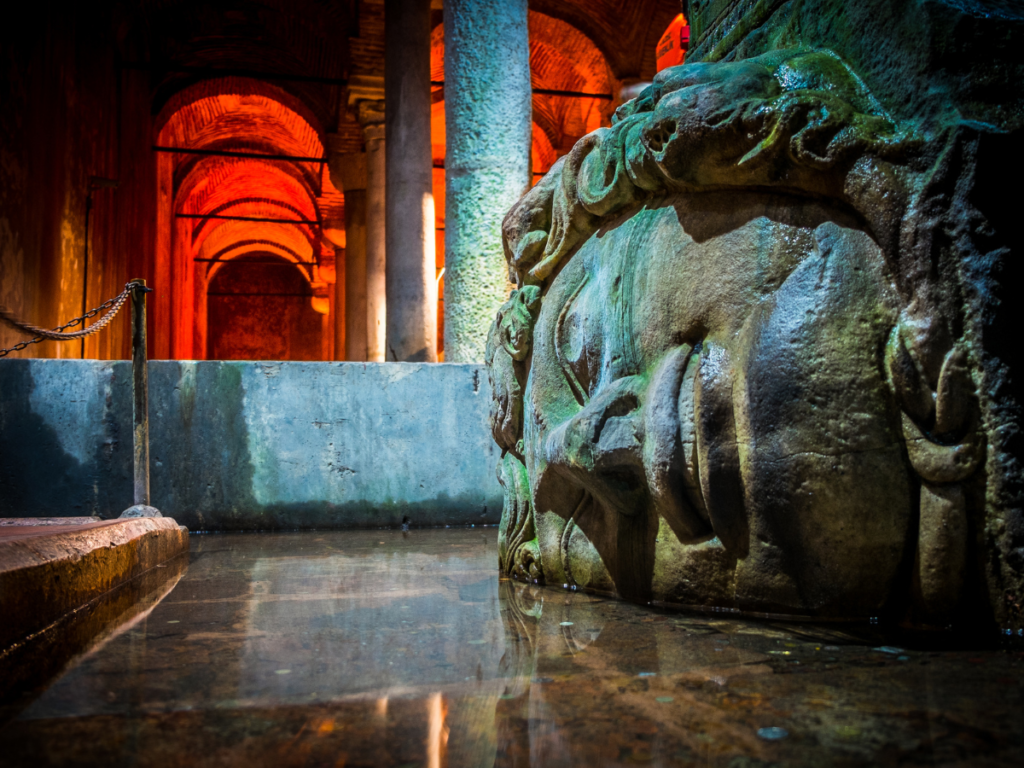
The Basilica Cistern plays a prominent role in my favourite 007 movie. Bond’s host and ally, Kerim Bey, explains that Emperor Constantine built it as a reservoir 700 years ago. However, in truth it was actually constructed a mind-boggling 1,400 years ago by Emperor Justinian.
6. Bosphorus Boat Trip Dinner
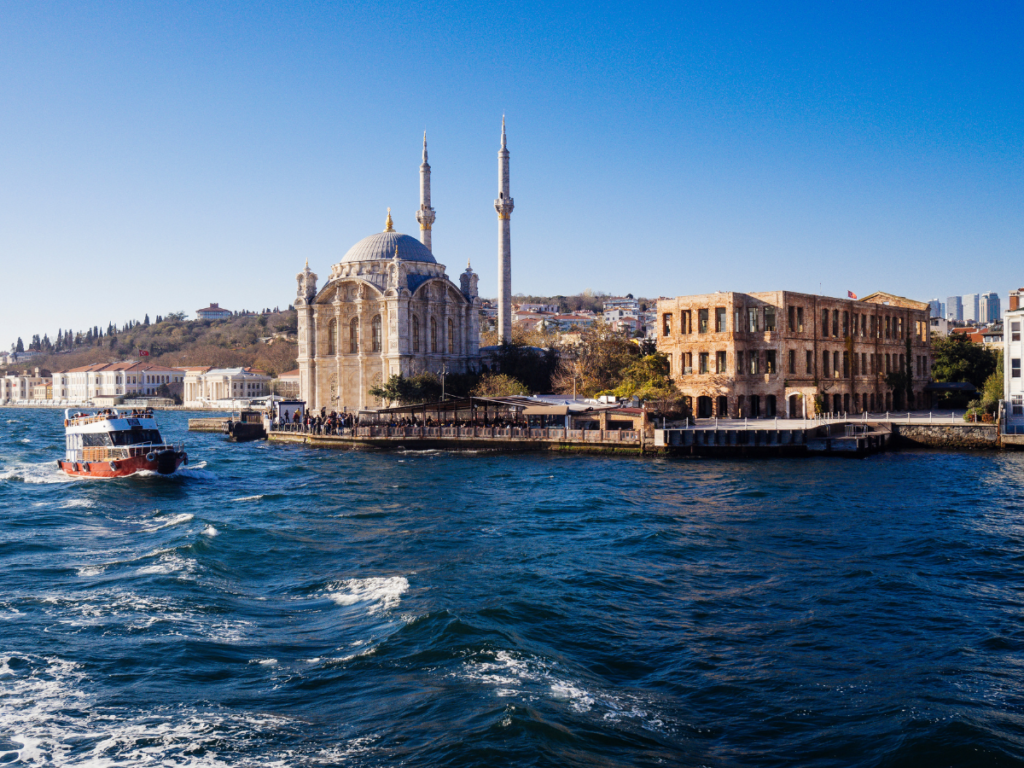
A leisurely dinner cruise along the Bosphorus is a fabulous way to end your first day in Istanbul. While you can take a cruise along the Bosphorus at any time, and to be fair it’s great at any time, I really recommend that you take a dinner cruise. Remember, even the “touristy” options can sometimes be fantastic.
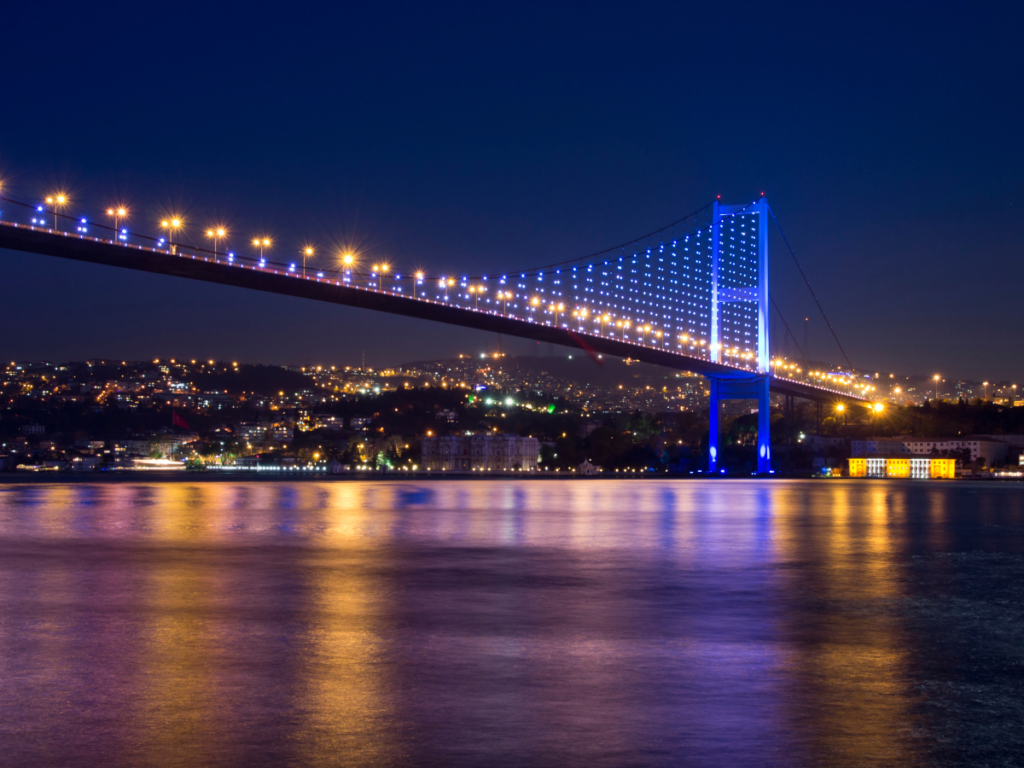
Most dinner cruises last for about 3 hours and include a 3-course meal and entertainment. Personally, I’m not particularly excited by the Whirling Dervish shows or belly dancing, although I suppose they can be fun. What I really enjoy are the views from the boat as you cruise along the Bosphorus.
7. Grand Bazaar and Spice Bazaar
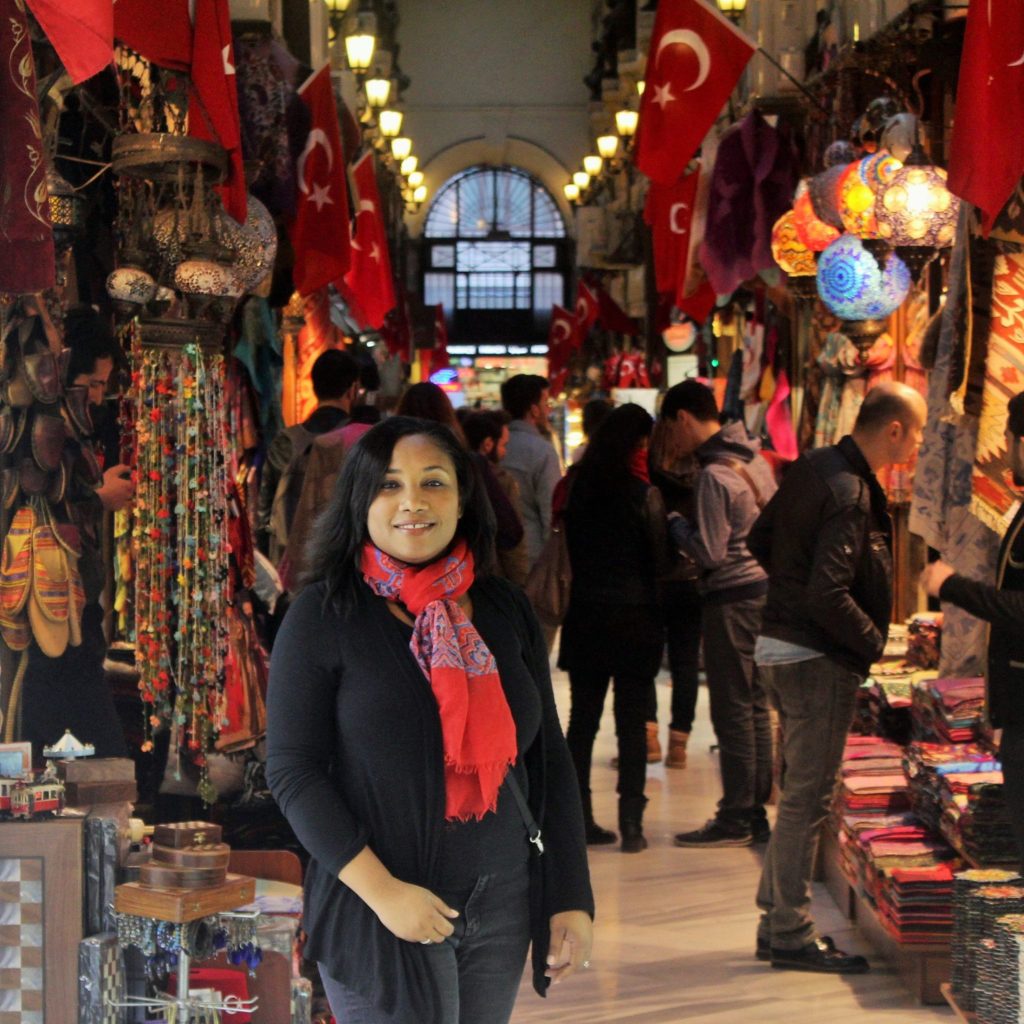
The Grand Bazaar and adjacent Spice Bazaar should also be on your Istanbul bucket list. Both can get very busy from 11am until about 3pm, so why not start your second day here and arrive before 10am? The Grand Bazaar has over 4,000 merchants selling practically everything you could want. I once left with a rather fetching, skin-tight orange velvet hooded jumpsuit – don’t even ask!
Of course, you don’t have to buy anything as wandering through the tight lanes absorbing the atmosphere and occasionally engaging the vendors is wonderful. If you do see something you like, be prepared to barter, and enjoy the bartering process. I suggest not showing too much interest and never ask the price. I typically counter any initial offer at or slightly above half of the price. If the vendor asks for ₺400, I’ll probably respond with ₺200, with a view to end up paying ₺300.
One thing I have noticed with many stallholders is if you go too low, they will refuse to sell to you at almost any price. I asked a Turkish friend about this, and she told me that they can be offended if you go too low.
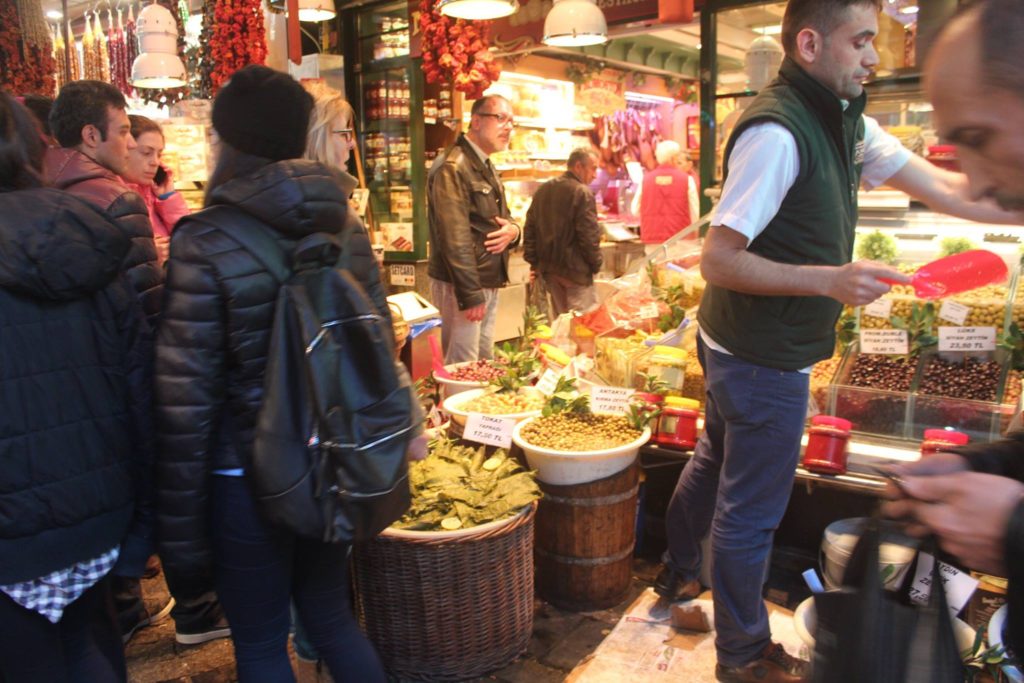
The Spice Bazaar is definitely worth visiting too. If you plan on taking some spices home, make sure that you find a vendor who will vacuum pack your purchase. Many will do this for you at no cost.
You should note that while the Spice Bazaar is open all week, the Grand Bazaar is closed on Sundays. Both are also havens for pickpockets, so secure your valuables carefully.
8. Galata District
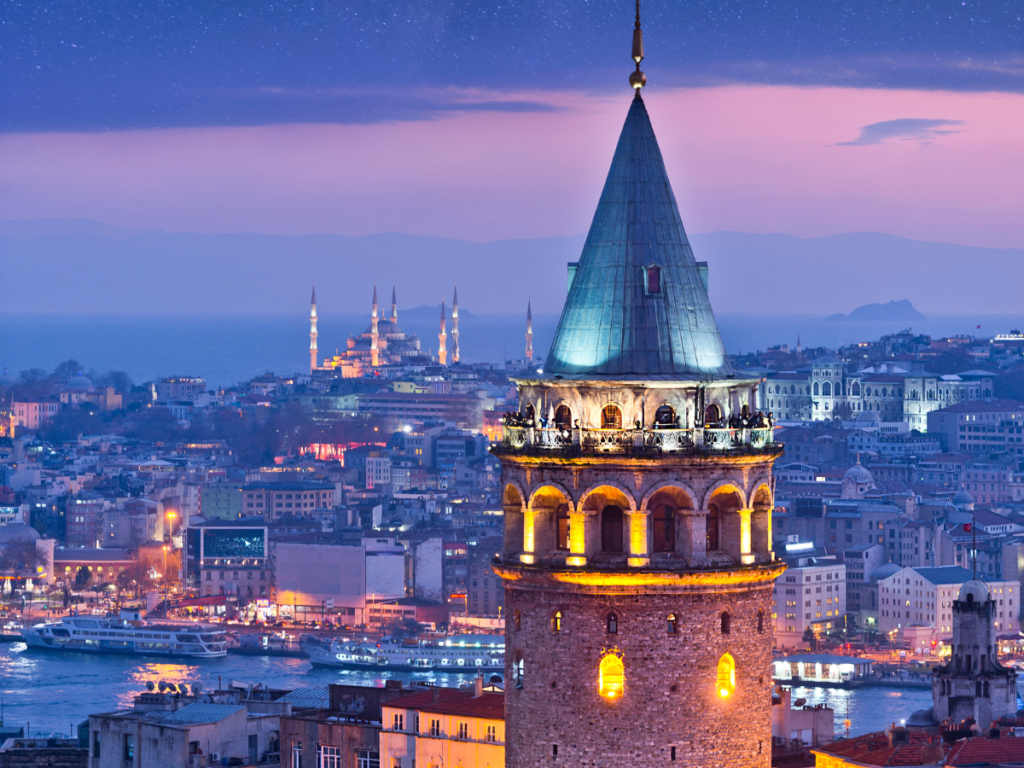
After spending a few hours in the increasingly hectic bazaars, it’s time to cross the Galata Bridge over the Golden Horn into the Galata neighbourhood. It’s a little different from the rest of the city, as it was originally the home of merchants from Genoa and for many years was outside the city of Constantinople, the city’s name until it was changed to Istanbul in 1930.
At the centre of the area is the 14th Century Galata Tower. From the top of the tower, you can get great views of the city, the Golden Horn, Bosphorus and Mamara Sea, especially after dark. That said, you can get equally good views from terraces of restaurants and bars all over the city without having to join an often lengthy line and pay a ₺130 (about €7) entrance fee.
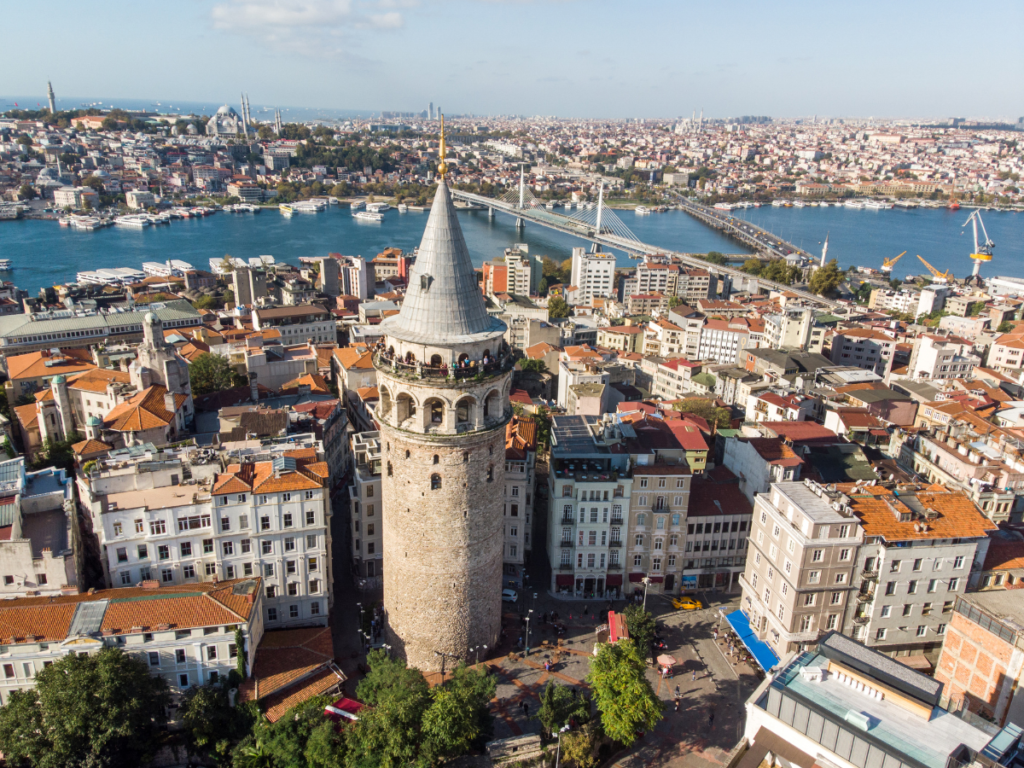
There are dozens of great restaurants and cafés in the neighbourhood. While it’s not exactly an authentic Turkish experience, I have enjoyed many cups of coffee at the Lavazza Coffee Shop. If you fancy something a little more substantial, try Privato Café. Both are less than 2 minutes walk from the Galata Tower.
While you are in the area take a few moments, stroll through Banks Street, the Kamondo Stairs, Kart Cinar Street and Serdar-i Ekrem Street.
9. Dolmabahçe Palace
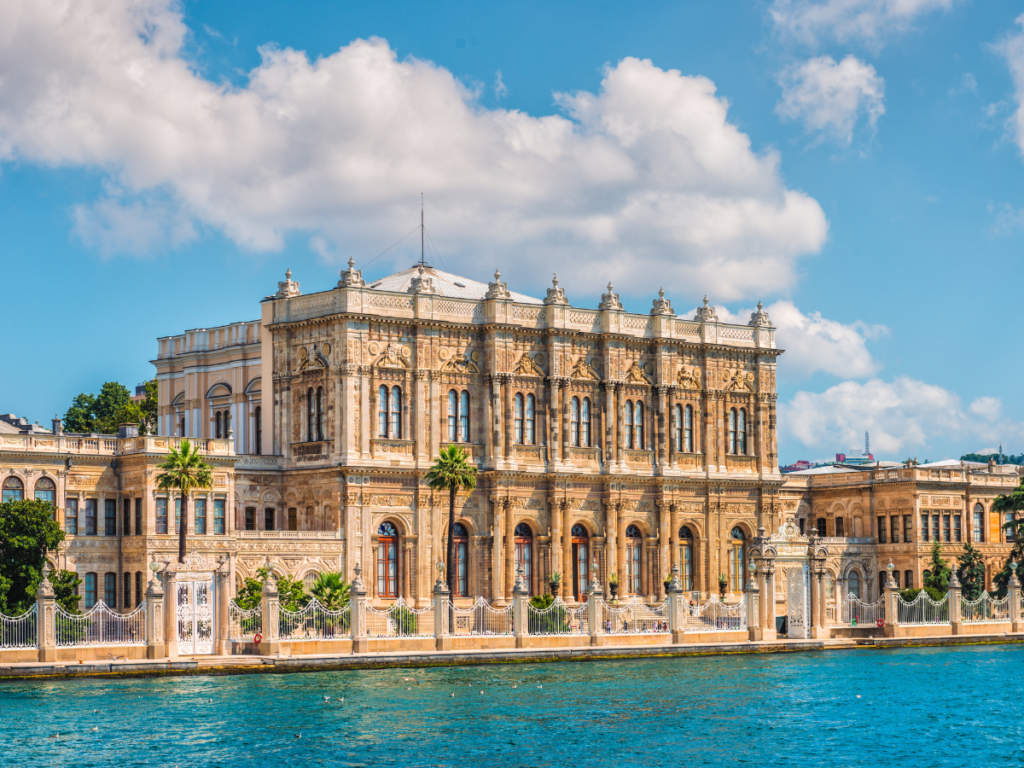
While it’s a slight detour down to the banks of the Bosphorus, and you may have seen it the previous evening from your dinner cruise, it’s worth the effort to get a closer look at Dolmabahçe Palace. The palace was finished in 1856 on the orders of Sultan, Abdülmecid I, who felt that the medieval Topkapı Palace was past its sell by date.
It remained home to the final six Sultans, until the abolition of the Caliphate in 1924. It was also home to the founder and first President of the Republic of Turkey, Mustafa Kemal Atatürk, who died there in 1938.
The palace is huge and the architecture, albeit looking slightly tired lately, is fabulous. It now houses a museum. As part of a busy day-tour you can enjoy an hour or so admiring the stunning exterior. If you plan on going inside, you will need at least three hours. The entrance fee for foreigners is ₺300, or about €7, which includes a free audio guide.
10. İstiklal Caddesi
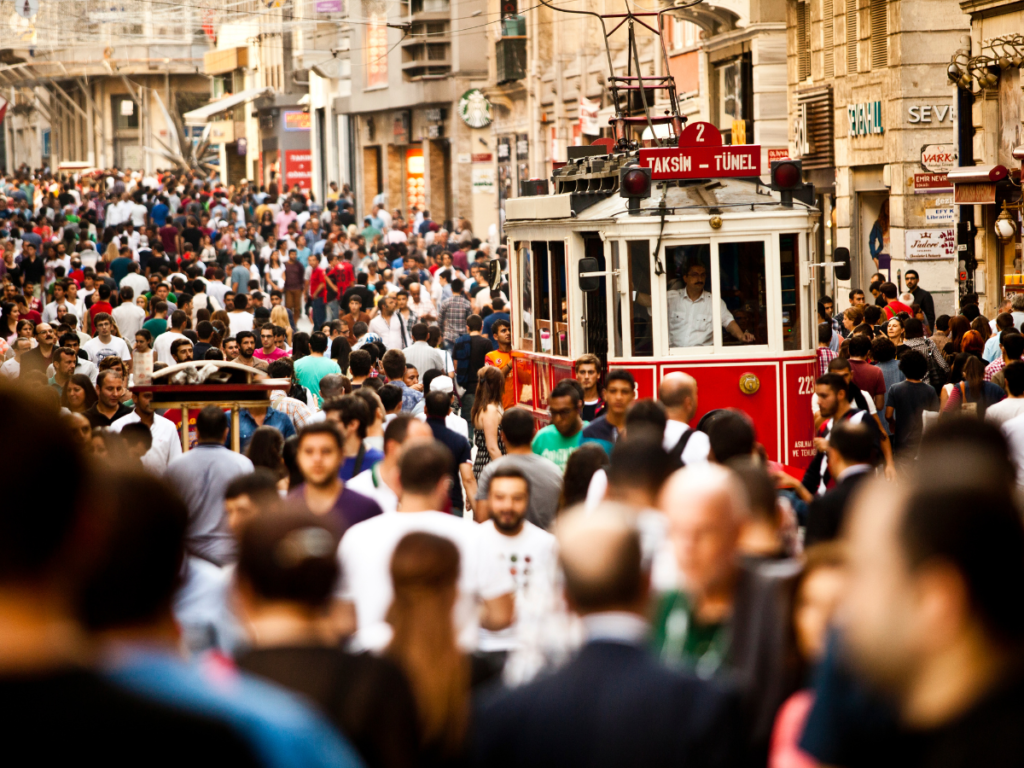
As you continue north out of the Galata neighbourhood, you will come to İstiklal Caddesi, which translates into English as Independence Avenue. It’s a 1.4km paved pedestrian street that is as important to Istanbul as 5th Avenue is to New York or Oxford Street is to London.
It is an exciting place to simply stroll along and take in the sights and the people while you nibble on some Turkish delights. You should also make sure that you get to ride on one of the vintage red trams that have been running up and down the street carrying weary shoppers since it was known as the Grande Rue de Pera in the 19th Century.
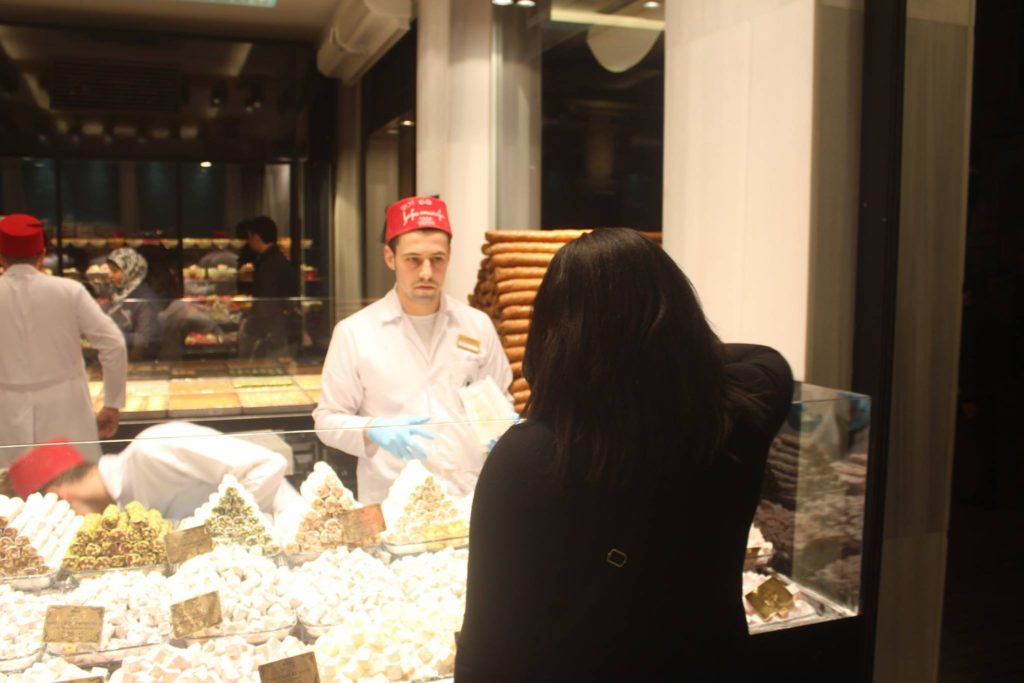
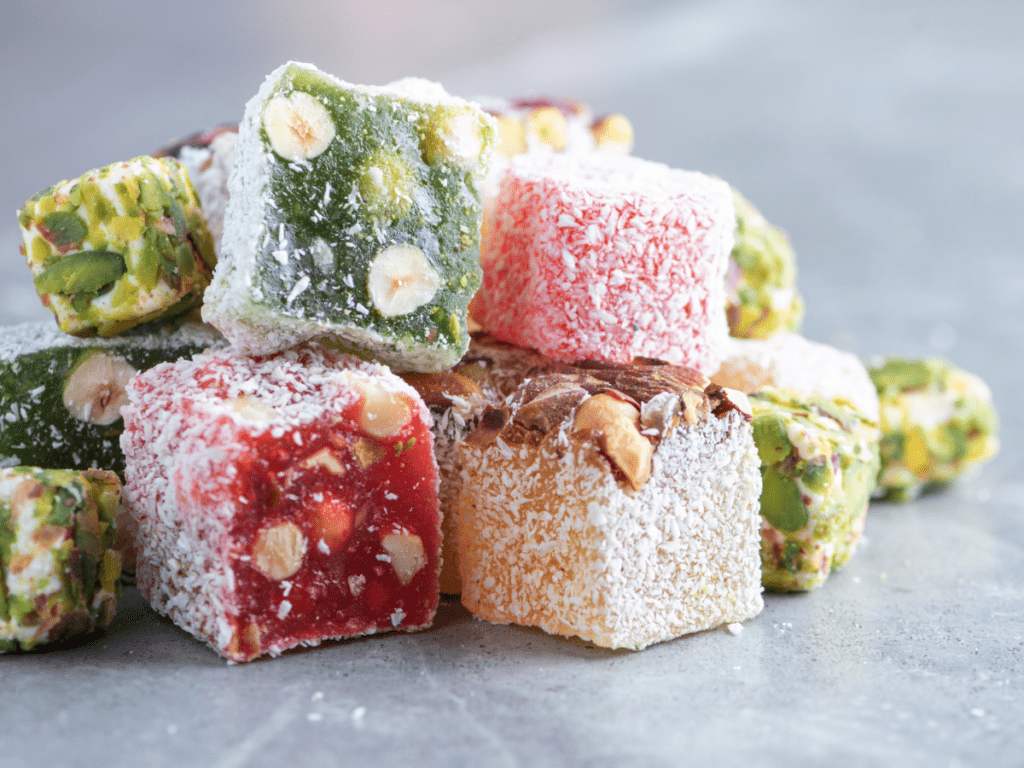
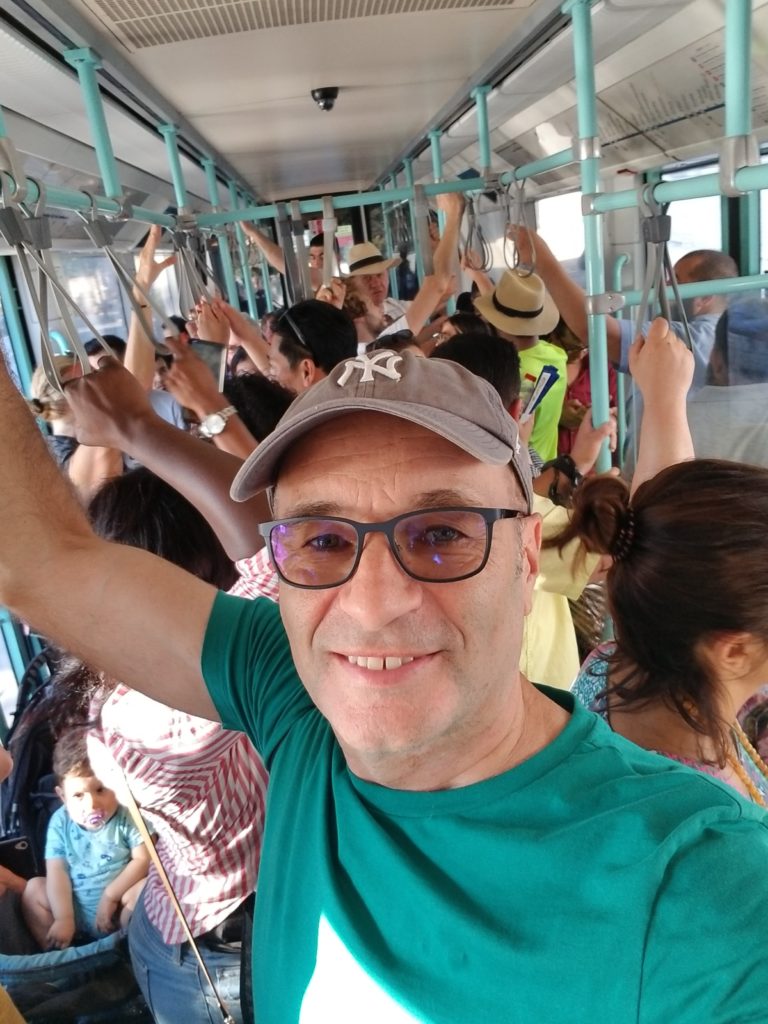
You also shouldn’t miss Çiçek Pasajı or flower passage. It’s a covered arcade dating from 1876 and the only word to describe it is stunning. Today it is lined with slightly overpriced cafés and restaurants. I like to find one with a table with a great vantage point and spent 30 minutes or so nursing a beer and maybe a plate of French fries.
Other highlights on İstiklal Caddesi include the Atlas Arcade, the Majestic Cinema, the Whirling Dervish House and, a personal favourite, Pandora Bookstore.
11. Taksim Square
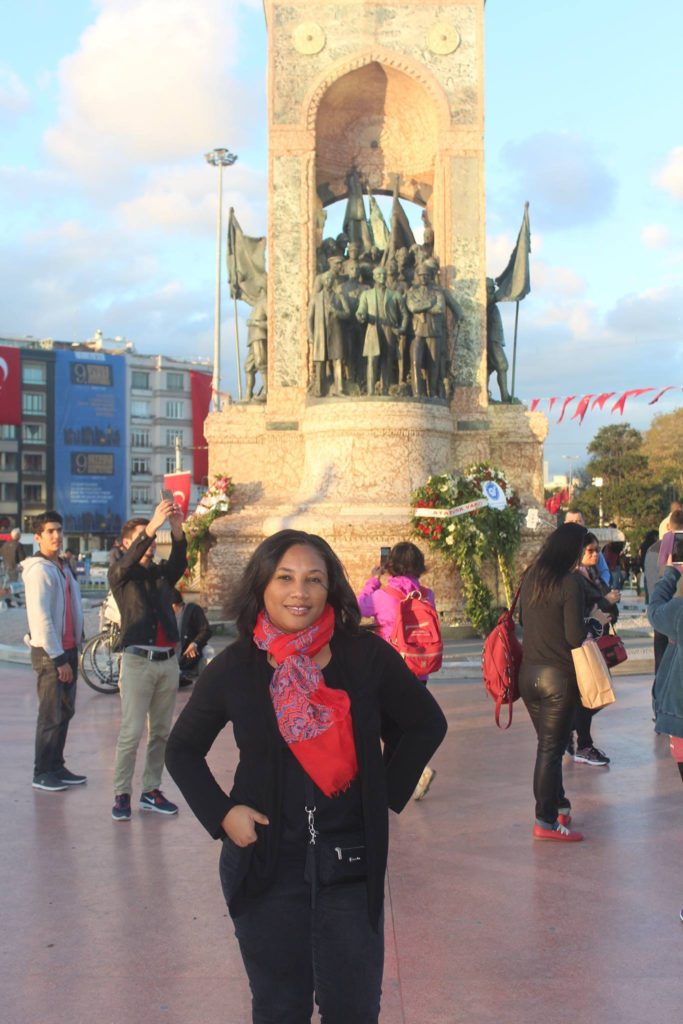
Located at the end of İstiklal Caddesi is Taksim Square. So far, our journey through Istanbul has taken us from medieval times to the 19th Century, so a great place to end our two days in Istanbul is Taksim Square, which is considered to be the heart of modern Istanbul. As it’s the main transportation hub, it’s easy to get back to your hotel or Airbnb by bus, subway or tram.
The centrepiece of the square is the Republic Monument, which was officially unveiled in 1928 to commemorate the founding of modern Turkey five years earlier. The square is bordered on each side by the architecturally spectacular Atatürk Cultural Centre, lovely Gezi Park, the Taksim Mosque and the Marmara Hotel, a relatively high-end modern establishment, which offers amazing views from the top floor.
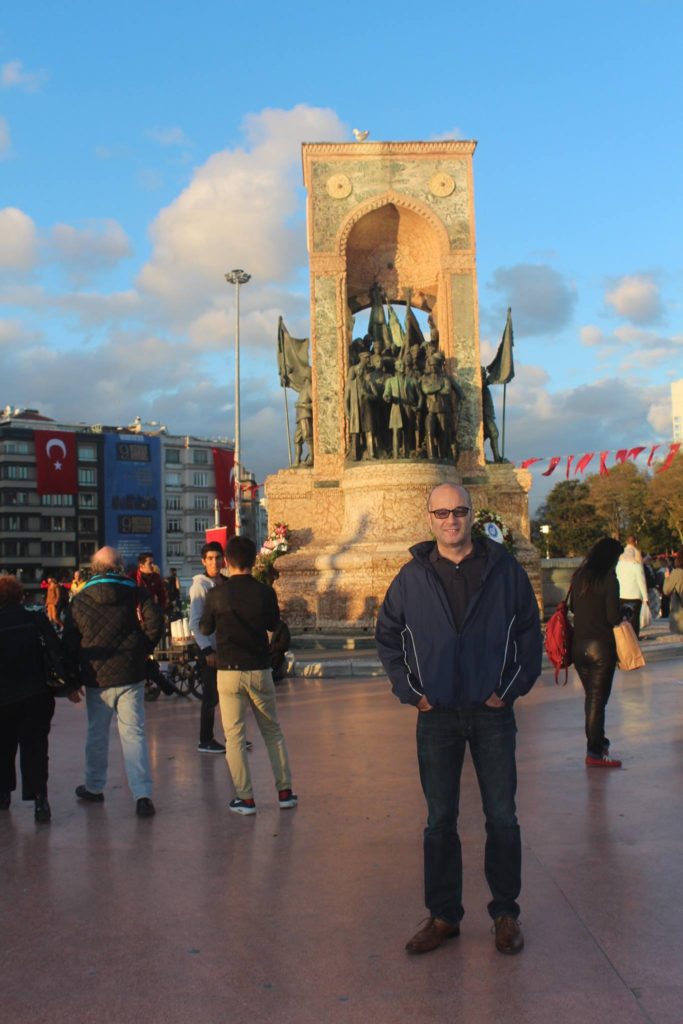
Taksim Square was for many years a favourite venue for political protests, and I twice inadvertently wandered into them. As they often became violent, demonstrations are now banned in the square, and armed police maintain a 24-hour presence in the area.
Istanbul is an amazing place, where East meets West, although it does seem significantly more Eastern to me. Maybe someone from further East would see Istanbul differently? The history, culture and food just have to be experienced at least once in your life. If you are lucky, you will be able to stay for a longer period. However, if all you have is two days, you can still have an amazing time in Istanbul.
Have you been to Istanbul or thinking of visiting? Tell us what you think about this article by leaving us a comment below.
Author
Nick Abbott
Hi, I’m Nick. Visiting foreign countries has been an important part of my life since my parents moved to Kano in Nigeria in 1977. Since then, as both a military officer and in later jobs I have enjoyed the huge privilege of being exposed to many different countries and cultures.
I am delighted to be able to support my wife Monique and Yes2Yolo primarily by contributing travel articles, providing editing and proof-reading services and being a general sounding board.
